Do you want to use social proof to increase your conversion rate and win more sales?
By including social proof in your digital marketing, you can convince more of your leads to make a purchase. How? By showing them how much their peers love your products.
That’s why all the big brands use social proof on their sites, on their social media, and in their email marketing.
Whether you’re a beginner or an old pro at social proof marketing, we’re here to help with this ultimate guide.
Our team at OptinMonster has spent over a decade helping businesses convert their website traffic into revenue. We know all the best ways to optimize your site to land more sales. That’s why we use social proof throughout our own website:
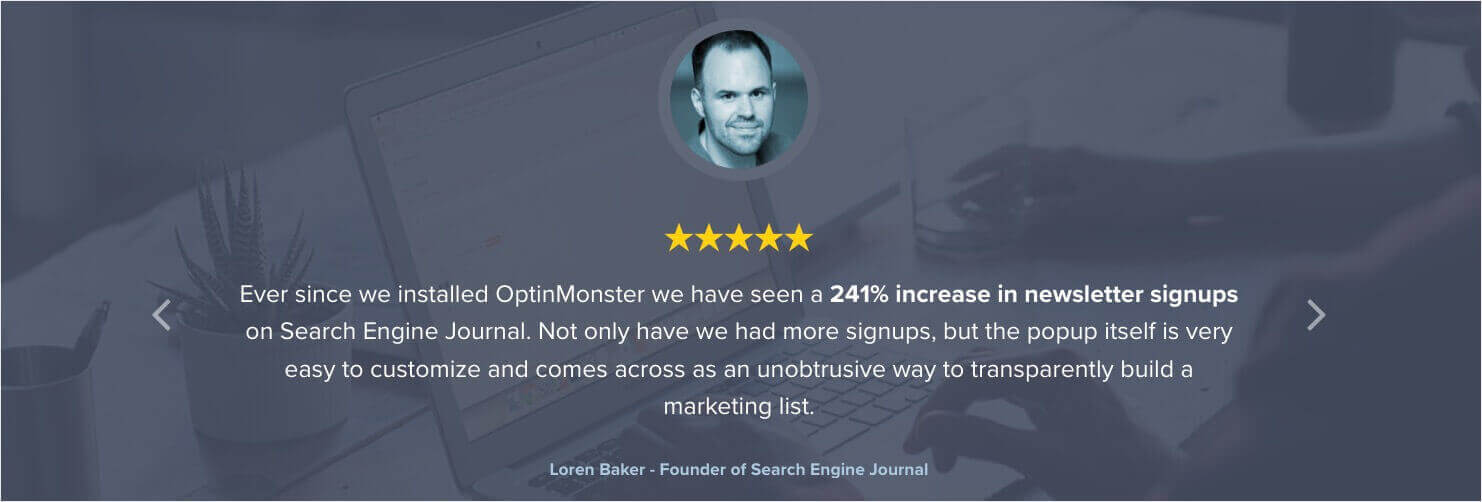
And is our social proof strategy successful? With over 1.2 million websites using our lead generation software, the answer is definitely yes.
In this guide, we’ll cover everything you need to know about using social proof in your marketing strategy. We’ll also share social proof examples and tips to help you improve your conversion rates and grow your business.
- What Is Social Proof?
- 6 Types of Social Proof
- 4 Data-Backed Benefits of Social Proof in Marketing
- 16 Social Proof Examples (With Tips)
- 1. Show Real-Time Purchases With TrustPulse
- 2. Add Testimonials and Numbers to Your Homepage Like FreshBooks
- 3. Create a Testimonial Page Like OptinMonster
- 4. Encourage On-Site Reviews Like Etsy
- 5. Create an Official Facebook Group Like ROKR
- 6. Pair Large Numbers With a Discount Like WPForms
- 7. Highlight Subscriber Count Like OptinMonster
- 8. Show Fast-Selling Products Like Maurices
- 9. Get Celebrity Endorsements Like Betty Crocker
- 10. Host Social Media Takeovers Like the City of Calgary
- 11. Host Industry Experts Like Chalene Johnson
- 12. Invest in Case Studies Like OptinMonster
- 13. Display Awards Badges & 3rd-Party Reviews Like MemberPress
- 14. Showcase Customer Photos Like ModCloth
- 15. Create a Referral Program Like Instacart
- 16. Add Social Proof to Popups with OptinMonster
What is Social Proof?
Social proof is the idea that people copy others’ actions to fit in, especially when they’re unsure of what to do. It’s often called ‘herd mentality.’ This concept helps explain why people value popular opinions and follow trends.
The term was first used by Robert Cialdini in his 1984 book ‘Influence: Science and Practice.’ Social proof is why we listen to recommendations, and trust what others say in reviews.
If that definition sounds like peer pressure, you’re not too off-base. However, social proof isn’t a type of bullying like peer pressure can be. In fact, it isn’t a bad thing at all. Instead, social proof simply states that humans, and thereby consumers, actively look to others when gathering evidence for a decision.
For marketers, that means it’s not enough to tell shoppers why you think your product is great. You must show shoppers that your existing customers think your product is great.
Consumers want proof from their peers and from unbiased 3rd parties, not from the brands selling the products.
What is an example of social proof?
Let’s say you’re planning a special dinner with a friend, and you’ve narrowed your choices down to 3 restaurants in a nearby city. You scan through the menus for each restaurant, but to make your final decision, you’ll probably depend on one thing: online reviews.
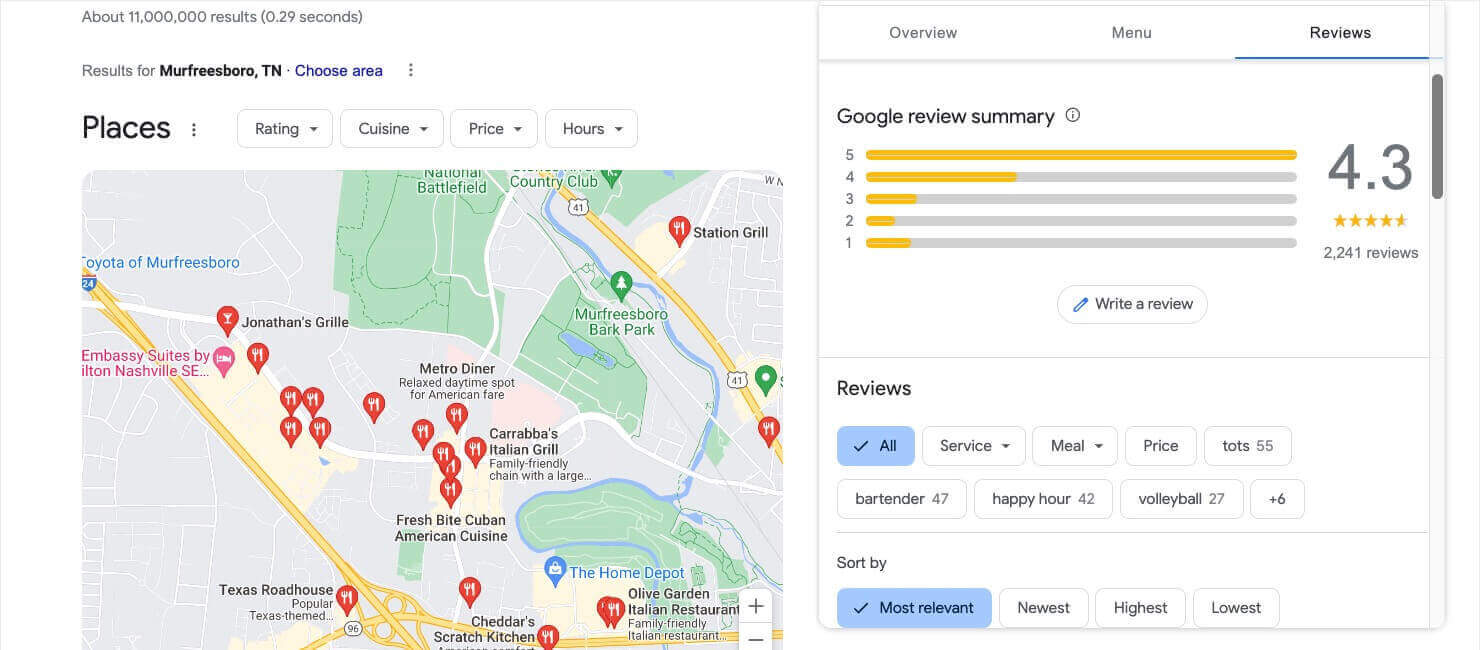
You check out comments on each restaurant’s social media pages, as well as 3rd party review sites like Yelp and Google. As you do so, you’ll examine several factors:
- The overall star rating: Does one restaurant have a 4.7 rating, while the others are closer to 3.5?
- The number of star ratings: A high rating average may not mean much if there are only 8 reviews. Fewer reviews may also indicate that the restaurant isn’t very popular.
- The specifics of the reviews: Do the reviews consistently say that the service is terrible? Do multiple reviewers say it’s the best Italian food they’ve ever had?
Every time you look to others to make a purchasing decision, you demonstrate the power of social proof.
Similarly, your own website visitors want to feel confident that they won’t regret spending money on your product. Marketers use social proof as a tactic for conversion rate optimization by easing the minds of worried customers.
6 Types of Social Proof
Now that we’ve covered the meaning of social proof, let’s look at the categories that are useful in digital marketing. These are the 6 different types of social proof:
- Customers: Social proof from your existing customers or users. These include customer reviews, testimonials, and case studies.
- Experts: Social proof from credible and esteemed experts in your industry, especially experts your target audience sees as aspirational.
- Celebrities: Social proof from celebrities or other influencers who have used your product.
- Crowds: Social proof from citing a large number of people. This includes highlighting your number of customers or how many 5-star reviews you’ve received.
- Friends: Social proof from friends of your potential customers, such as users seeing that 50 of their Facebook friends follow your business page.
- Certifications & Awards: Social proof from credible, 3rd party entities that certify that you are knowledgeable, high-quality, or trustworthy. A “USDA Certified Organic” badge is one example.
Data-Backed Benefits of Social Proof in Marketing
Next, we’ll tackle the question of why social proof is vital to your marketing strategy. To explain some of the benefits of social proof, we’ll look at some statistics from recent studies on social proof and customer behavior. This data will illustrate just how well social proof works.
1. Social Proof Improves Shopper Confidence
In Bazaarvoice’s 2023 report on Shopper Experience, they take a close look at the impact of user-generated content (UGC), such as reviews, ratings, photos, Q&As, and social media posts. In other words, they look at how social proof affects consumers.
Their finding? 78% of shoppers report feeling more confident in a purchasing decision when they see UGC.
2. Shoppers Care More About Social Proof than Branded Content
Bazaarvoice’s study also shows an imbalance between the priorities of shoppers and the priorities of brands. 75% of brands spend most of their content marketing budget on branded content. However, 67% of shoppers rely more on UGC when making purchasing decisions.
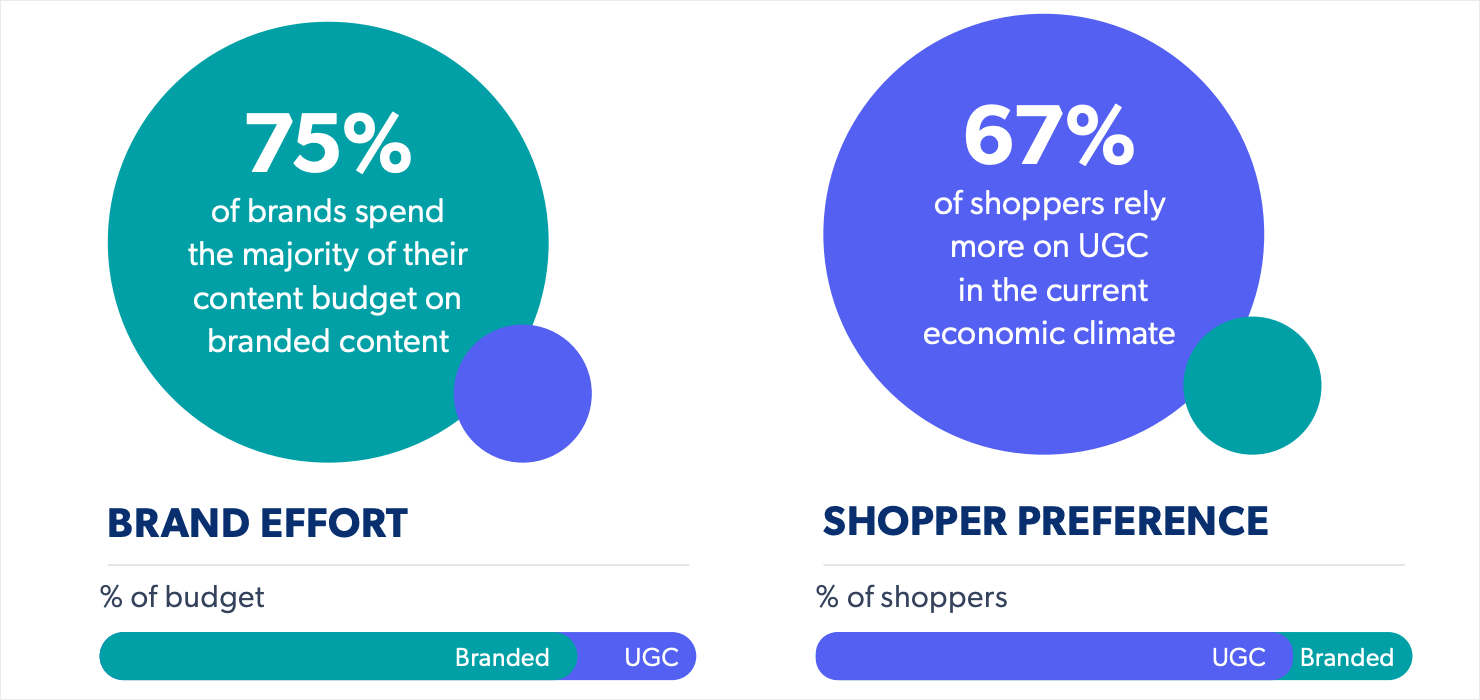
You can see all of Bazaarvoice’s findings by signing up for the Bazaarvoice Shopper Experience Index Vol. 17.
3. Local Businesses Need Social Proof, Too
According to BrightLocal’s 2023 Local Consumer Review Survey, 98% of people read online reviews for local businesses.
Plus, 76% reported reading online reviews regularly, and 21% said they read them daily.
4. Social Proof Directly Leads to More Sales
And finally, the most important benefit of social proof is that it helps you win more sales and make more revenue. Here are some stats:
- Websites with customer reviews see a 67% higher eCommerce conversion rate than websites where customers don’t see reviews. – Trustmary’s customer review tests
- 83% of Americans say a recommendation from a friend or family member makes them more likely to purchase a product or service. – Convince & Convert’s Word of Mouth Report
- 77% of people who watch a testimonial video say it helped convince them to buy the product or service – Wyzowl’s Testimonial Statistics Report
These are just a few of the social proof statistics that show how important it is to make social proof a priority in your marketing strategy.
16 Social Proof Examples to Increase Conversions
The question isn’t whether or not social proof will help you increase conversions, but rather which social proof strategies should you use. Here are some real-life examples of social proof. Each example is paired with a tip for how you can use social proof in your own marketing efforts.
1. Show Real-Time Purchases With TrustPulse
Type of Social Proof: Customers
When you display real-time stats, you can show website visitors that other people are choosing your product right now. Not only is this a great example of social proof, but it adds the fear of missing out (FOMO) into the mix as well.
A great tool to easily implement this is TrustPulse. This software lets you display your most recent site activity in a small but attention-grabbing popup.

You can show purchases, registrations, signups, or anything you want. You can even set up “on fire” notifications if something in your store is blowing up in popularity. These are great for leveraging FOMO on landing pages and checkouts.

Plus, TrustPulse takes less than 5 minutes to set up, from initial signup to running live on your site.
Just click here to get started with TrustPulse.
2. Add Testimonials and Numbers to Your Homepage Like FreshBooks
Type of Social Proof: Customers and Crowds
One of the most commonly used forms of social proof is the customer testimonial. Testimonials are a lot like positive reviews, but they are used a bit differently.
Testimonials are quotes that explain the benefits of your product, and they’re usually displayed along with a name and photo. For B2B companies, the person’s title and company are also listed.
FreshBooks is a popular invoicing and accounting software for small businesses. They use testimonials right on their homepage to highlight why business owners love their product. By doing this, they make sure their testimonials connect wth their target audience: business owners who want to simplify their accounting. They also use the power of large crowds, by stating that 30+ million people have used FreshBooks.

3. Create a Testimonial Page Like OptinMonster
Type of Social Proof: Customers
In addition to displaying testimonials throughout our own website, we also have a dedicated OptinMonster testimonials page where we list quotes from some of our best reviews.
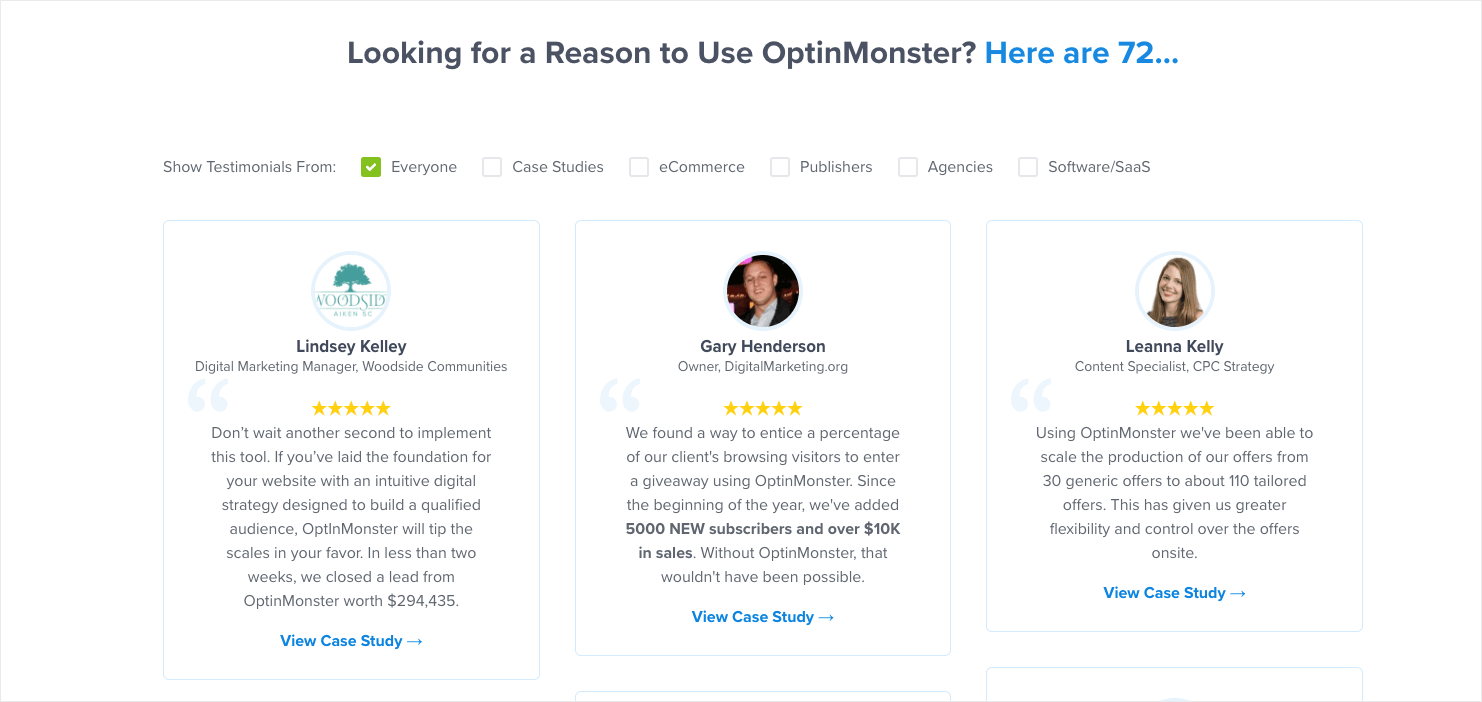
Customer reviews and testimonials can be displayed in a number of different formats as long as they highlight the value of your product through the voices of satisfied customers. In fact, according to one case study, WikiJobs used testimonials to increase sales page conversion by 34%.
4. Encourage On-Site Reviews Like Etsy
Type of Social Proof: Customers and Crowds
If you’ve ever purchased from the online marketplace Etsy, you’ve probably gotten an email that looks like this:
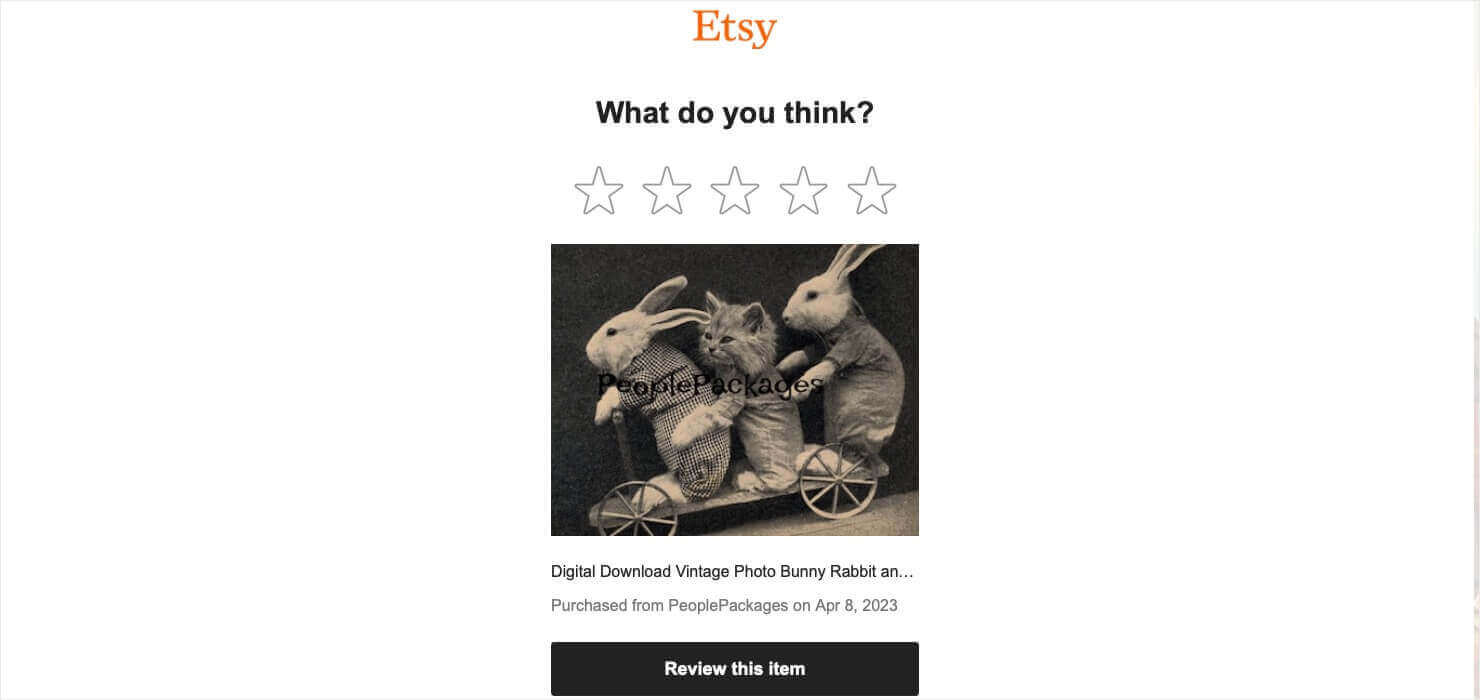
If you want to get more reviews and ratings on your site, just ask! Below the “Review this item” button, Etsy’s email says, “Leaving a review helps Jo with their shop, and also others shopping on Etsy.”
This is a clever tactic on Etsy’s part. Etsy benefits from getting more reviews, but they focus on the benefits to the seller and other shoppers.
As the reviews pile up, shoppers will be swayed both by the quality and number of customer reviews.
Pro-tip: Don’t be afraid to offer incentives in exchange for a review, especially if you’re a local business. This is becoming a more common tactic, with 26% of local consumers reporting that they were offered a discount in exchange for a review in 2022.
5. Create an Official Facebook Group Like ROKR
Type of Social Proof: Customers and Crowds
ROKR is an online retailer that sells detailed wooden 3D puzzles. Their Facebook page runs a private group called ROKR® Official Fans Group.
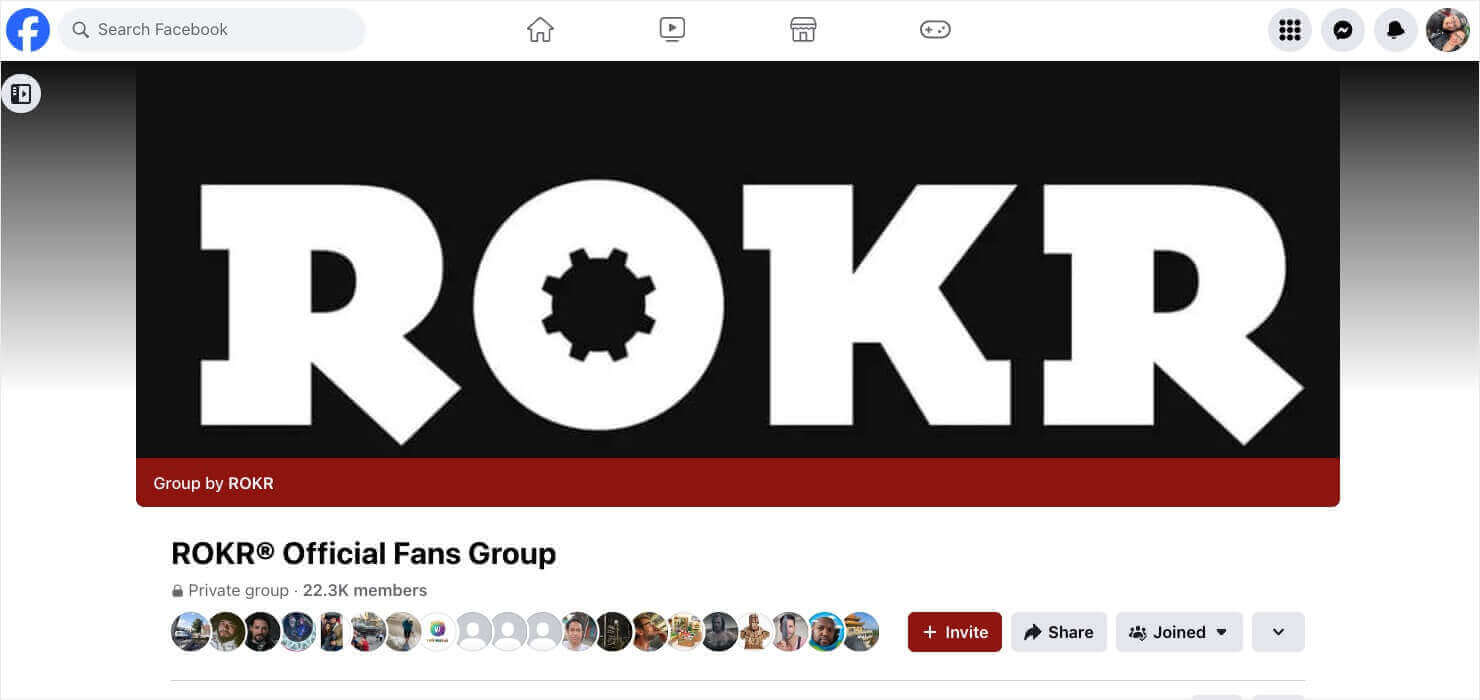
I joined this group because I had purchased one of their puzzles and wanted to find advice on how to complete a few tricky parts. It was clear that many other new members joined for the same reason, and established members were happy to help.
However, something else happens when you join this group:
You see thousands of fans posting their own puzzle projects and displays.
These posts show up in your Facebook newsfeed, so you regularly see how much others are enjoying the puzzles they’ve bought and assembled. This results in massive free marketing for ROKR, as people who join because of a single purchase see a thriving community of over 22,000 members. And those members advertise ROKR’s products every time they post a finished puzzle. This strategy can easily turn new customers into brand loyalists.
ROKR occasionally posts in the group with special announcements, but the group’s primary focus is community building and social proof.
6. Pair Large Numbers With a Discount Like WPForms
Type of Social Proof: Crowds
WPForms, a form-building plugin for WordPress, uses a floating bar from OptinMonster to promote a special Valentine’s Day sale.

But in addition to the coupon button and countdown timer, WPForm also includes some compelling social proof:
- “Trusted by 6M+ websites”
- “12,500+ 5-star reviews”
By including these numbers, WPForms makes a strong case for the value of their special offer.
7. Highlight Subscriber Count Like OptinMonster
Type of Social Proof: Crowds
Here at OptinMonster, we have an email newsletter that provides tips on optimizing your website to get more conversions.
We have optin campaigns sprinkled throughout our site, asking visitors to sign up for that newsletter:
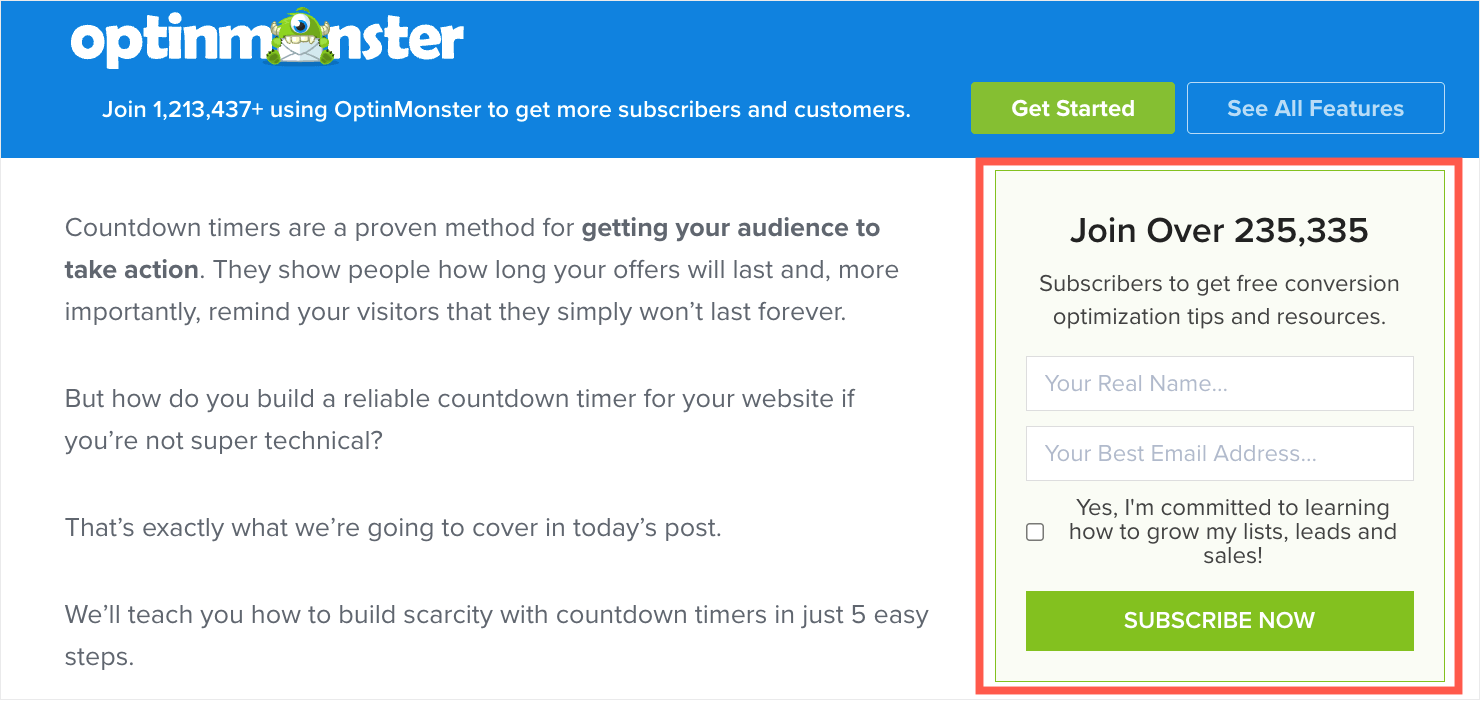
Notice that the main heading for this signup form isn’t “Join our list” or “Sign up today.” Instead, it’s “Join Over 235,335.” We lead with the social proof of the size of our subscriber list.
8. Show Fast-Selling Products Like Maurices
Type of Social Proof: Crowds
The clothing store Maurices adds a “Going Fast” notification on pages for products that are selling quickly.
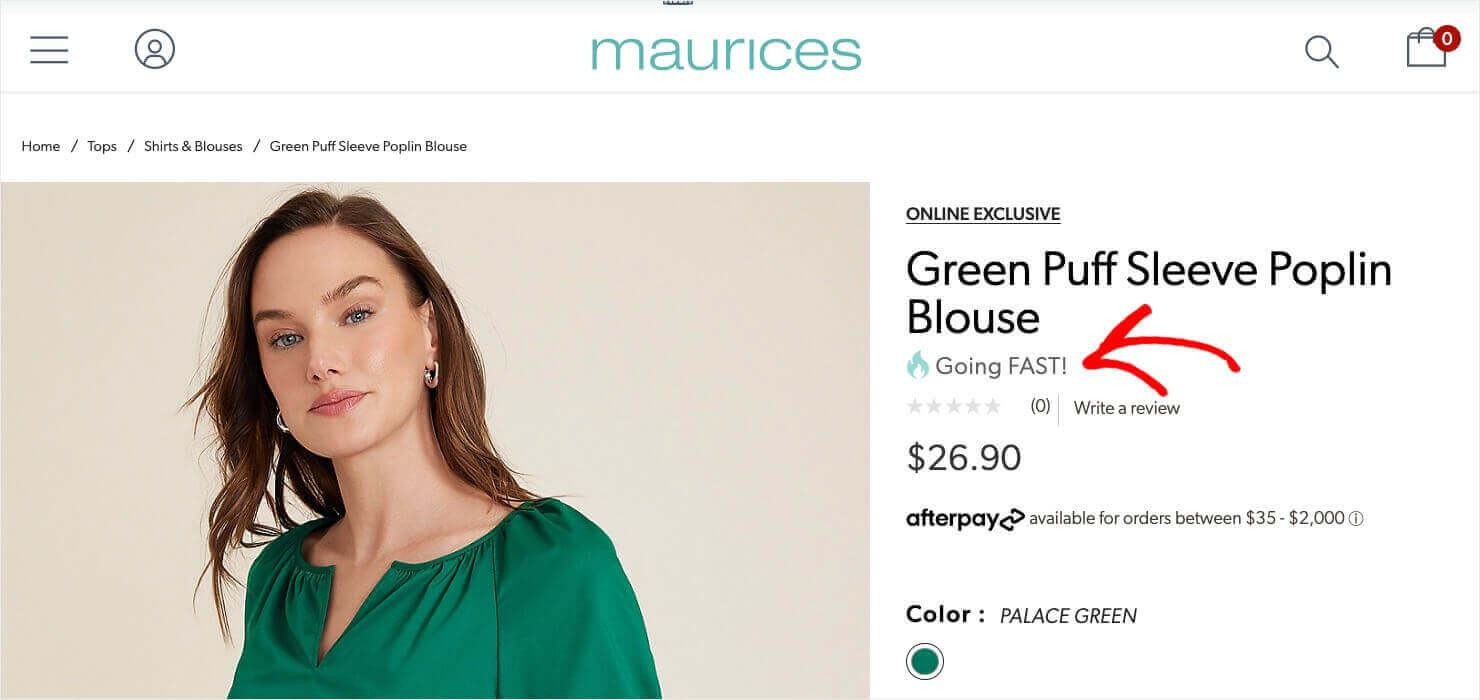
This strategy is usually thought of as a scarcity tactic. And it does indeed create a sense of urgency for shoppers, who realize they need to buy before the product is sold out.
However, phrases like “Going Fast” and “Almost Sold Out” also leverage social proof.
In this case, it sends the message, “You’re right to like this blouse because other people like it, too. Go ahead and buy it while you can!”
9. Get Celebrity Endorsements Like Betty Crocker
Type of Social Proof: Celebrities
In the age of social media, influencer marketing is more important than ever. In this social proof example, Betty Crocker partnered with actress Alyson Hannigan to promote their products at Walmart.

Hannigan’s 2 million+ Instagram followers don’t just follow her for updates on her acting career. She also posts about her family and her home life as a mom. So this partnership is both a celebrity endorsement and an example of influencer marketing. Hannigan’s followers will see this photo and be tempted to buy the ingredients for this tasty dessert themselves.
10. Host Social Media Takeovers Like the City of Calgary
Type of Social Proof: Experts
Social media takeovers are a great way to expand your influence to an audience that may be interested in what you have to offer but aren’t necessarily familiar with your brand. In a social media takeover, an influencer or expert will literally take over the posting on your social networks for a certain amount of time.
The city of Calgary had a social media takeover of their Instagram platform. Residents and city ambassadors would take over the city’s Instagram for a week to show off all the cool things the city has to offer.
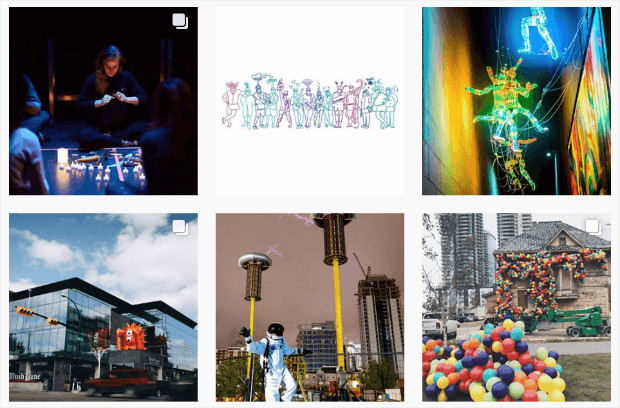
This strategy was a clever way to use social proof. People who research the city for a potential visit or move will see these takeover posts from experts. In this case, the experts are people who already live in the city and can show just how great it is.
Takeovers are usually an easy sell because they also benefit the influencer or expert, since they get to reach a new audience, too.
11. Host Industry Experts Like Chalene Johnson
Type of Social Proof: Experts
Inviting expert guests to contribute to your social media platforms or blog is a great way to use social proof. If experts believe in your brand enough to contribute, then customers are more likely to trust you, too. Wellness coach Chalene Johnson is always doing this in Instagram Stories and on Snapchat:
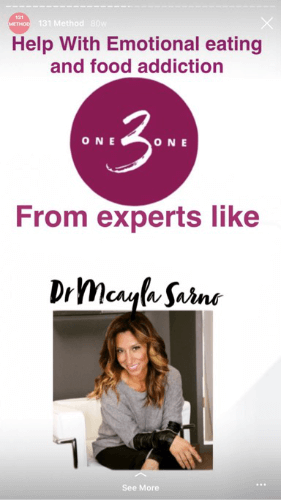
Your followers, and others who stumble upon these guest posts, tend to attribute the expert’s authority to your brand. After all, it’s your platform that’s being used to share the message. Plus, followers will look to you as a source of this knowledge in the future, even though you’re acting just as a distributor. Over time, expert social proof helps you build trust with your followers and potential customers.
12. Invest in Case Studies Like OptinMonster
Type of Social Proof: Customers
In a case study, you present the success story of one of your customers or clients. A good case study should include the following:
- Specific data on how your product or service helped your customer succeed
- A compelling cause-and-effect narrative
- Customer quotes that explain why your product was a game-changer
At OptinMonster, we have a dedicated Case Studies section on our blog, where you can easily browse our customer success stories.
For instance, we did a case study with the American Bird Conservancy. At the top of the case study page, we highlight the most important statistics from the study:

Throughout the article, we introduce the nonprofit’s mission and goals and show examples of the OptinMonster popups they used to generate more leads.

The case study concludes with a summary of the results and a testimonial quote from the American Bird Conservancy’s Director of Digital Communications.
13. Display Awards Badges & 3rd-Party Reviews Like MemberPress
Type of Social Proof: Certifications & Awards
Does your business have industry certifications or accreditations? Have you won awards? If so, you want customers to know about them! Most certifying organizations have badges or logos that can be freely displayed on your website.
MemberPress, a WordPress membership plugin, displays badges for their G2 awards in the footer of their site.

But the award badges aren’t the only social proof in this footer. MemberPress also shows their plugin’s average rating on several 3rd party review sites.
14. Showcase Customer Photos Like ModCloth
Type of Social Proof: Customers and Friends
People love to be featured, so why not feature your happy customers as social proof? With a customer photo showcase, you can show off your customers’ styles or creations that have resulted from your products.
For example, Modcloth has a style gallery where they allow customers to post photos of themselves wearing the products. They encourage customers to use a specific Instagram hashtag to be included in their gallery. Not only does this give ModCloth social proof for their site, but their customers’ friends will also see these posts on Instagram.

This is even more powerful than hiring professional models because shoppers can see how their clothes look on real customers. And the customers are advertising your products to their friends with every post they make.
To show off your customers’ photos on your website, you can use a Smash Balloon
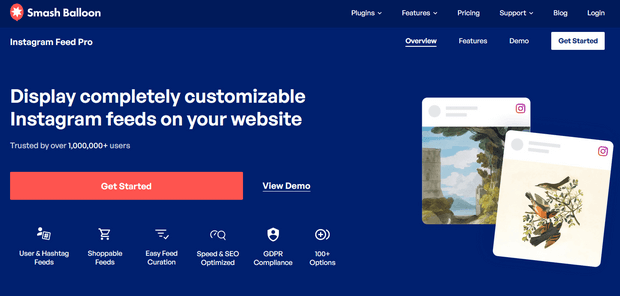
With Smash Balloon’s Instagram Feed Pro, you can easily create an Instagram hashtag feed and embed it anywhere on your WordPress site.
Here’s an example of an Instagram hashtag feed:
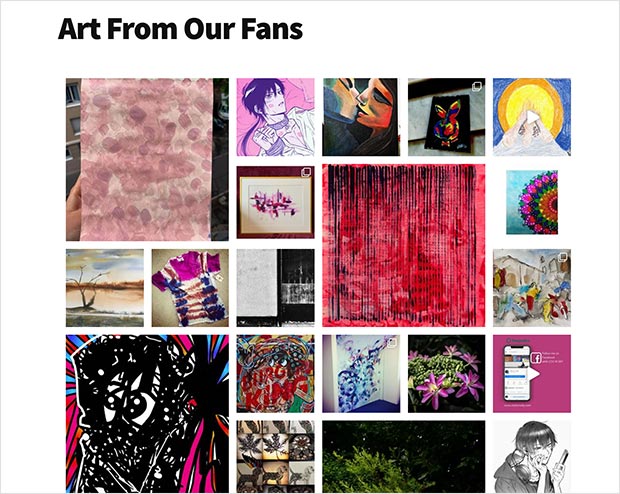
Smash Balloon also offers feed plugins for X (formerly Twitter), Facebook, YouTube, TikTok, and customer reviews. Now you can keep your site automatically updated with user-generated content as well as your own social feeds and latest customer reviews.
Get started with Smash Balloon today!
15. Create a Referral Program Like Instacart
Recommendations from friends and family are some of the most powerful forms of social proof. That’s why it’s a great idea to incentivize those recommendations by creating a referral program.
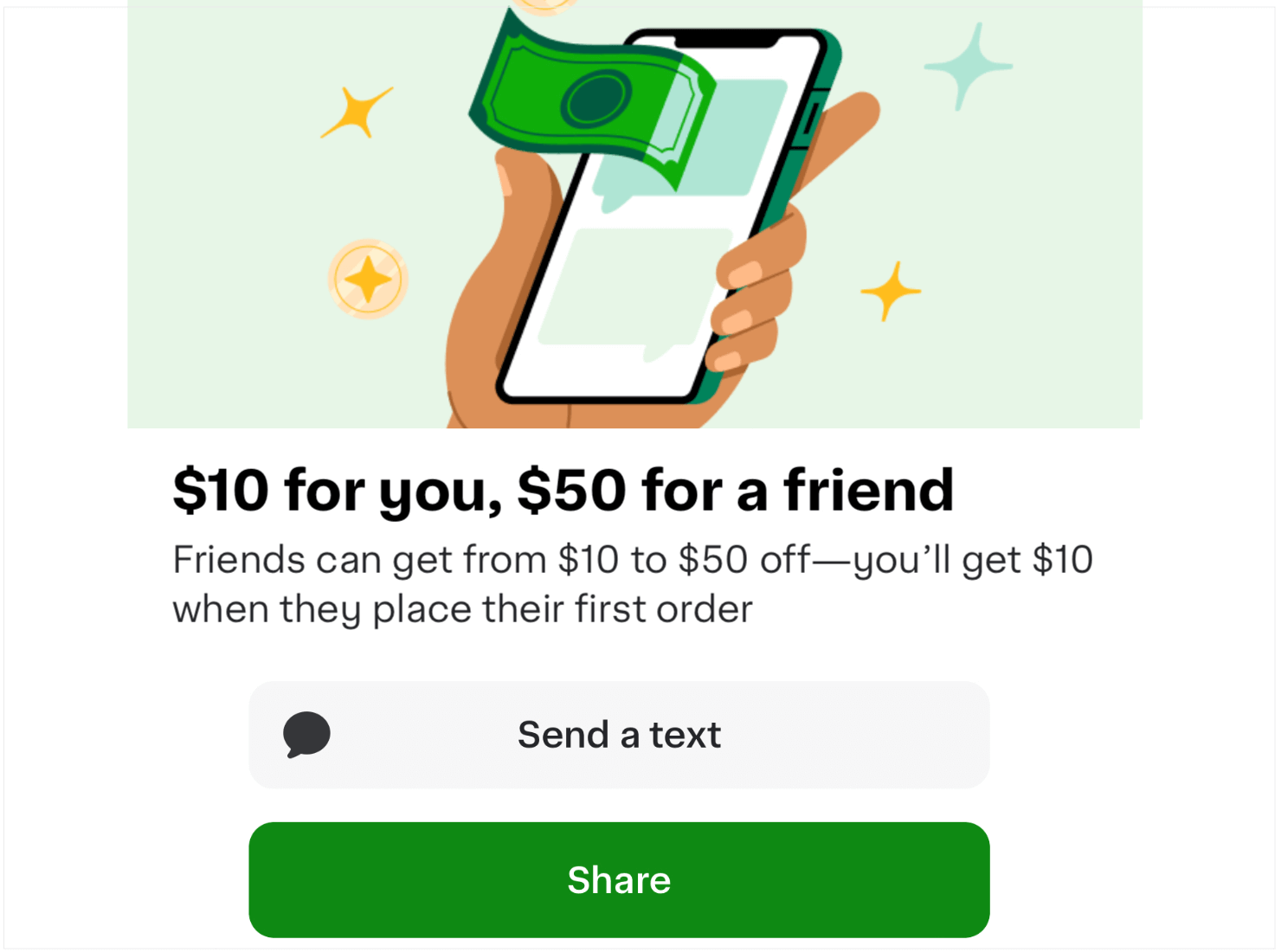
Instacart uses a popular referral strategy by offering 2 incentives:
- The customer’s friend gets a discount on their first order.
- The existing customer gets an account credit when the friend makes their first order.
This type of referral program uses social proof to attract new customers, and it also encourages brand loyalty within your existing customer base.
16. Add Social Proof to Popups with OptinMonster
So far, we’ve covered a wide variety of social proof examples: everything from encouraging product reviews to getting celebrity endorsements to creating case studies.
But once you have all this great social proof ready, how do you make sure your target audience sees it?
One excellent way is to put that social proof in a popup on your website!
That’s where OptinMonster comes in!
With our 100+ pre-made templates and easy drag-and-drop builder, you can have a social proof campaign up and running on your site in mere minutes.
Here’s an example of an OptinMonster popup we use on our own site:
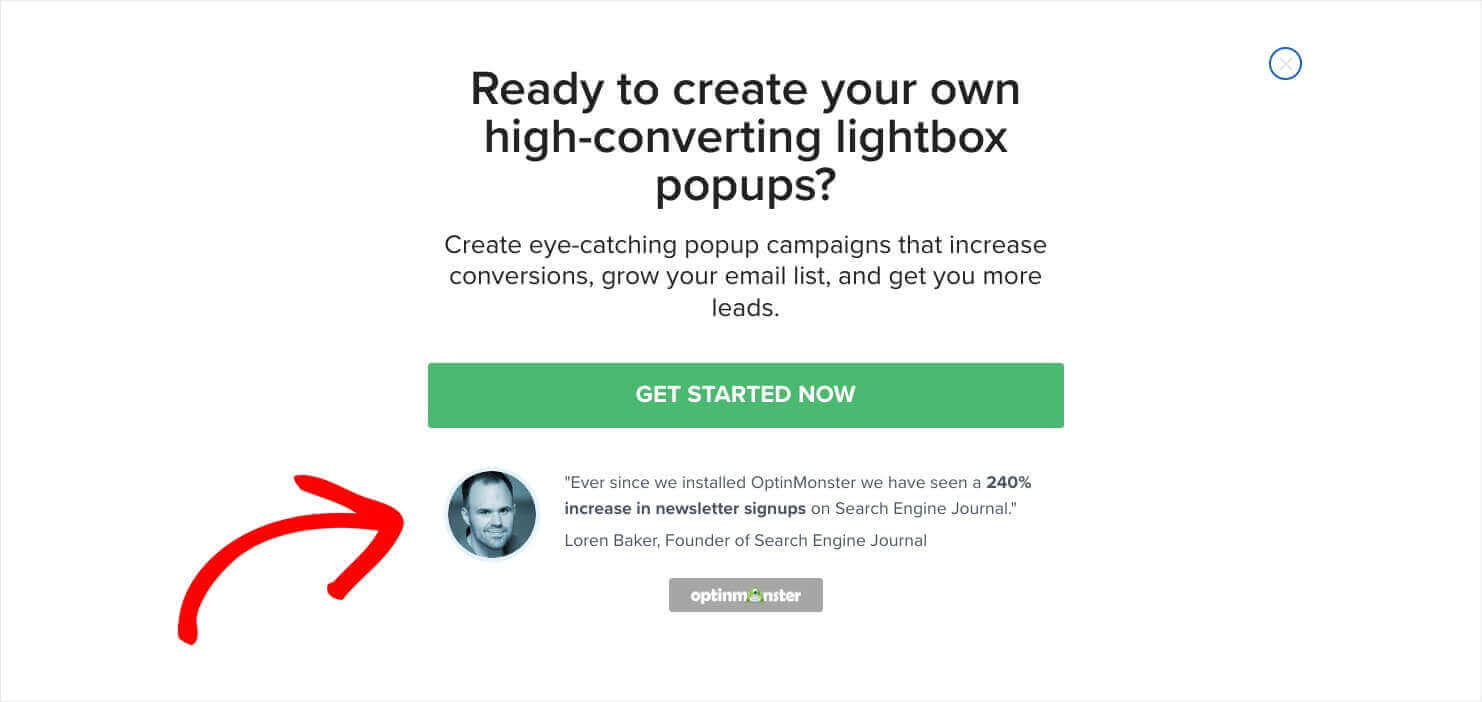
Notice that below the call-to-action button, we highlight one of our customer testimonials. This quote, along with many others, is presented throughout our site. But by including it in this popup, we’re able to draw more attention to it, right as we’re asking our website visitors to get started with our software.
With OptinMonster, you can create lightbox popups, fullscreen mats, floating bars, inline forms, and more.
Practically any of the social proof examples in this list can be added to these on-site marketing campaigns to make them more compelling for your users.
Plus, OptinMonster’s robust targeting and triggering display rules let you show your campaigns to the right people at the right time. Here are just a few examples:
- Exit-intent® Technology: Show your message to visitors as they’re about to leave your site. Add your best social proof and an enticing offer, so you can get their email address or land a sale before they go.
- Page-Level Targeting: Tailor your popups and social proof for specific product pages or blog posts.
- Referrer Detection: Create campaigns based on how the visitor got to your site, such as by clicking a Facebook ad.
- Time on Site: Show your social proof to your most engaged users, by setting them to display after visitors have spent a certain amount of time on your site.
Are you ready to convert more website visitors with social proof? Give OptinMonster a try!
More Social Proof Resources:
- Social Proof Statistics: Powerful Facts That Will Help You Boost Your Brand
- 18 Best Social Proof Software Tools to Boost Sales
- 9 Ways to Get More Product Reviews and Increase Social Proof
- 10 Creative Examples of Testimonials to Win CustomersHow to Ask for a Testimonial: 7+ Tips to Get Glowing Customer Quotes


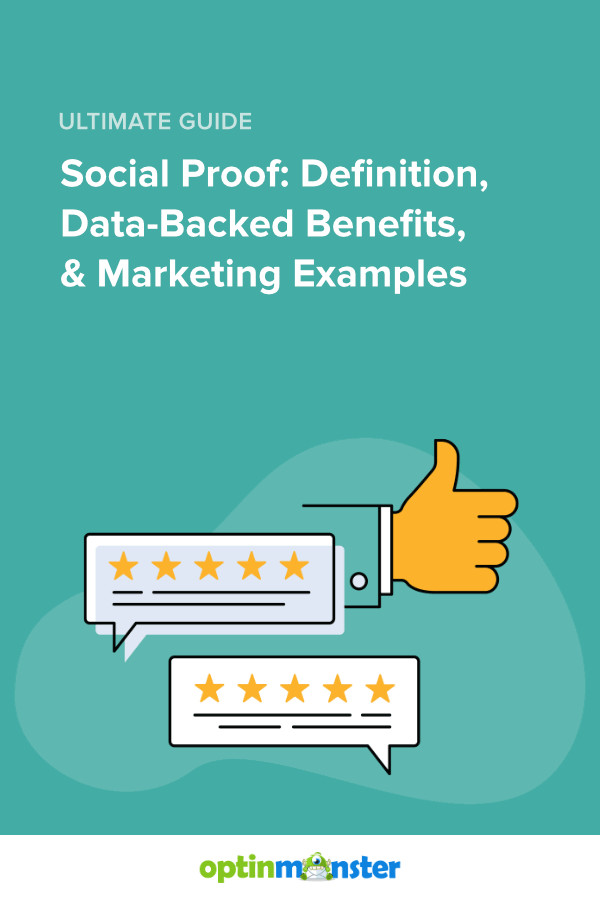








Add a Comment